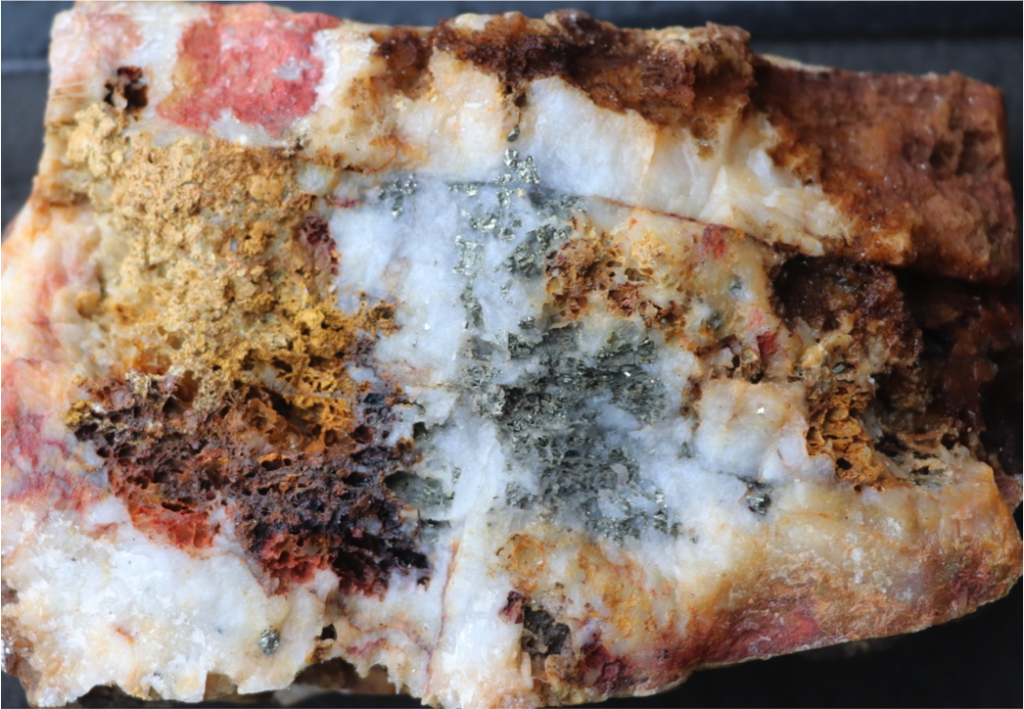Brazilian Gold Developer Cabral Gold Nears Production Decision at Cuiú Cuiú Project
Cabral Gold Corporation is on the verge of a pivotal transition from explorer to producer, as the company advances its Cuiú Cuiú gold project in northern Brazil toward a final investment decision amid record gold prices.
The Cuiú Cuiú project represents an entire gold district rather than a single deposit, currently hosting 1.2 million ounces across indicated and inferred resource categories. The company ha
...
Brazilian Gold Developer Cabral Gold Nears Production Decision at Cuiú Cuiú Project
Cabral Gold Corporation is on the verge of a pivotal transition from explorer to producer, as the company advances its Cuiú Cuiú gold project in northern Brazil toward a final investment decision amid record gold prices.
The Cuiú Cuiú project represents an entire gold district rather than a single deposit, currently hosting 1.2 million ounces across indicated and inferred resource categories. The company has completed a pre-feasibility study for a starter operation that reveals compelling economics in today’s gold environment.
“With gold at $3,700, pre-tax, you’re making $2,500 profit per ounce produced,” noted CEO Alan Carter, highlighting the exceptional margins created by the project’s projected all-in sustaining costs of $1,200 per ounce.
What differentiates Cabral’s approach is the modest initial capital requirement of just under $40 million, coupled with a condensed 12-month construction timeline. This strategy dramatically reduces the financial barriers to production while accelerating the path to cash flow. At current gold prices, the payback period for the initial investment is estimated at a remarkably brief five months.
Financing discussions have reached advanced stages, with Carter indicating that shareholders should expect news regarding construction financing within weeks. The company plans to fund development primarily through debt, potentially supplemented with an equity component.
“It’s nice to have the wind at our back, instead of our face, for a change,” Carter remarked about the current gold market sentiment and institutional appetite for gold investments.
Risk management features prominently in Cabral’s technical approach. The project will employ heap leaching technology with a distinctive on-off pad system. “We spend 30 days stacking each pad, 60 days leaching each pad, and then 30 days removing that material before we start again,” explained Carter. While more expensive than permanent pad systems, this method provides operational flexibility and reduces technical risks associated with heap permeability issues.
The company has already ordered long-lead items, including the processing plant currently under construction in Australia. This equipment will be commissioned in Western Australia before being containerized and shipped to the project site in Brazil, demonstrating management’s commitment to maintaining construction schedules.
While advancing toward production, Cabral continues aggressive exploration with three drill rigs currently operating across the district. Recent drilling has yielded impressive results, including intercepts of 11 meters at 33 grams per tonne and 12 meters at 27 grams per tonne at the Machichie northeast zone, plus 39 meters at 5.1 grams per tonne at Jerimum Cima.
“We’d like to, in 12 to 18 months’ time, double the current resources that we’ve got,” Carter stated, outlining the company’s ambitious growth targets. This exploration strategy aims to establish maiden resources on four new discoveries while continuing to expand existing deposits.
The project’s location provides strategic advantages. Cuiú Cuiú sits adjacent to GMining Ventures’ Tocantinzinho mine, Brazil’s third-largest gold producer generating 200,000 ounces annually. Carter, who was involved in the original discovery of that deposit, noted a critical distinction: “The Cuiú Cuiú area has a much larger footprint in terms of the amount of gold that was mined by small miners 40 years ago from the streams. There was 10 times the amount of gold that came out of Cuiú Cuiú.”
This historical context, combined with soil anomalies significantly larger than those at the neighboring mine, suggests substantial district-scale potential extending well beyond the current resource base.
To execute its plans, Cabral has strengthened its team with key additions, including Vinicius Domingues, former head of regulatory affairs for Vale (Brazil’s largest mining company), providing critical permitting expertise. For construction, the company has hired Luiz Celaro, a Brazilian mining engineer experienced in building similar operations in the country.
The development will be managed through a combination of in-house capabilities and partnership with Ausenco, a major engineering firm with significant Brazilian operations, ensuring access to local expertise while maintaining international standards.
The global gold market’s continued strength, with prices reaching new all-time highs, has created an optimal environment for Cabral’s transition to production. Carter observed that “the general sentiment and the fact that gold keeps hitting all-time highs” has generated unprecedented institutional interest, with “generalist funds now moving into the gold space and moving down the food chain, so to speak” from major producers to smaller development-stage companies.
With the confluence of record gold prices, institutional capital seeking exposure to gold equities, and Cabral’s imminent production timeline, the company appears well-positioned to capitalize on current market conditions while developing a district with significant long-term growth potential.


